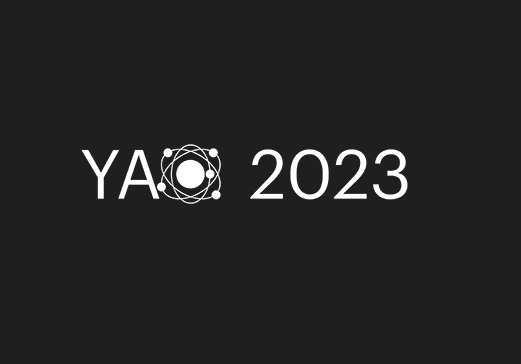The pursuit of understanding the fundamental constituents of matter has, for centuries, captivated the collective intellect of physicists. In this endeavor, the realm of optics emerges as an indispensable ally, illuminating our path through the esoteric world of atomic and subatomic phenomena. “Thinking small” evokes a paradigm that embraces the minuscule intricacies of the universe, where atom opticians, armed with advanced techniques, redefine the very notion of resolution. Their remarkable abilities to manipulate light and matter prompt us to reconsider the boundaries of observation and analysis.
The heart of atom optics lies in its ability to bridge the chasm between the macroscopic and the microscopic. Traditional optical instruments have long struggled with the diffraction limit, which confines resolution to approximately half the wavelength of light used for imaging. However, by leveraging the quantum mechanical properties of light and matter, atom opticians have ingeniously devised methods to transcend these limitations. Their innovations evoke the image of skilled artisans delicately adjusting the strings of a cosmic instrument, harmonizing light and matter to unveil the minutiae of atomic landscapes.
At the core of this discipline is the concept of matter waves, a principle pioneered by Louis de Broglie in the early 20th century. Every particle of matter, it turns out, exhibits wave-like behavior, enabling us to interact with atoms in fundamentally novel ways. This duality forms the bedrock upon which modern atom optics is constructed. Through techniques such as atom interferometry and optical tweezers, physicists harness the wave properties of matter, facilitating unprecedented precision in measurement and manipulation.
The advent of these methods has heralded a new era in nanotechnology and quantum optics. By employing laser fields to cool and trap atoms, researchers have been able to study previously inaccessible phenomena such as Bose-Einstein condensation and quantum entanglement. These observations not only deepen our grasp of fundamental physics but also hint at revolutionary applications in quantum computing and information technology. The marriage of atom optics with these burgeoning fields offers a tantalizing glimpse into a future where computation and communication operate on principles derived from the very fabric of reality.
Moreover, the unique appeal of atom optics can be observed through the lens of experimental design. The stark contrast between classical optics and atom optics highlights a transformative conceptual shift. In classical optics, light is the primary medium through which we observe the world. In atom optics, however, light becomes an instrument for probing the properties of matter itself. This inversion of utility showcases the adaptability of physical principles and emphasizes the necessity of interdisciplinary approaches to scientific inquiry.
Within the context of experimental exploration, one cannot overlook the significance of quantum measurement. Quantum phenomena are notoriously elusive, often resisting straightforward observation. Herein lies the brilliance of atom optics, which allows for the precision measurements of quantities such as phase shifts and coherence. Through carefully constructed experiments, physicists are now able to glean information about the underlying structure and behavior of quantum systems. This newfound capability transforms the landscape of theoretical physics, offering empirical validation to ideas that were once relegated to the realm of speculation.
The applicability of these techniques extends far beyond the confines of academic research. The healthcare sector, for instance, is on the cusp of transformative advancements fueled by insights gleaned from atom optics. Techniques such as interferometric microscopy and atom-based sensing are paving the way for unprecedented sensitivity in medical diagnostics. These innovations evoke the imagery of using a finely-tuned instrument to detect the faintest whispers emanating from biological samples, thereby enhancing our ability to diagnose conditions at their nascent stages.
Furthermore, as the climate crisis intensifies, the precision inherent in atom optics positions it as a crucial ally in environmental monitoring. The ability to detect and quantify trace gases with unrivaled accuracy serves to bolster our efforts in understanding and mitigating the impacts of anthropogenic activities. Through atom optics, we are equipped to discern the imperceptible changes in our atmosphere, akin to a watchful guardian alert to the subtle shifts that may portend significant consequences.
Nevertheless, the journey into atomic realms is fraught with challenges. As the field evolves, ethical considerations must be paramount. The potential misuse of atom optical techniques in surveillance raises profound questions about privacy and autonomy. As stewards of scientific progress, a commitment to responsible research and application must guide the trajectory of advancements in atom optics.
In conclusion, the emergence of atom optics heralds a paradigm shift in our capacity to perceive and manipulate the world around us. Through the innovative integration of light and matter, these atom opticians have redefined resolution, allowing us to explore the universe at an unprecedented level of detail. The applications extend across diverse domains, from healthcare to environmental science, reinforcing the relevance of this field in addressing the pressing challenges of our time. The metaphor of skilled artisans crafting a cosmic masterpiece encapsulates the essence of their work—a labor of precision and creativity driving humanity’s quest to comprehend the intricacies of existence. Ultimately, as we continue to “think small,” we lay the foundation for a future rich with discovery and understanding. The microcosm beckons, and the light is our guide.












